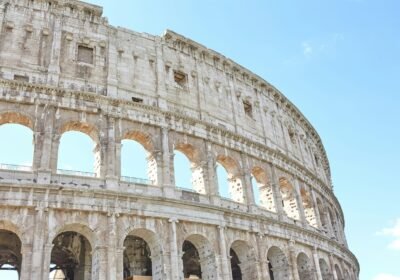Exploring Eritrea: A Journey Through History, Architecture, and Cultural Impact
The Origins of Eritrea: A Historical Overview
Eritrea’s historical significance is rooted in its geographical positioning in the Horn of Africa, serving as a crossroads for various ancient civilizations. The region’s history dates back to the Kingdom of Aksum, which arose around the first century AD. This kingdom was pivotal in the trade networks of the time, forging connections across Africa, the Middle East, and beyond. The Aksumites were known for their advanced architectural prowess, as exemplified by the impressive stelae found throughout Eritrea, which serve as testaments to their engineering skills.
Over the centuries, Eritrea witnessed the rise and fall of numerous influential civilizations. After the decline of Aksum, the region was influenced by various groups, including the Beja people and later the emergence of the Islamic Sultanates in the 7th century. These sultanates played a vital role in Eritrea’s cultural development, introducing new elements of governance, trade, and religion, notably Islam, which has since become a significant aspect of Eritrea’s cultural identity.
The colonial era began in the late 19th century when Eritrea came under Italian control, leading to significant infrastructural developments, albeit through exploitative practices. This period transformed the landscape of Eritrea, with the introduction of European-style urban planning and architecture that can still be seen in cities like Asmara. The Italian influence was complemented by a brief British administration after World War II, which laid the groundwork for Eritrea’s future political complexities.
As Eritrea moved through the 20th century, the struggle for independence became a critical historical milestone. Key figures, such as Isaias Afwerki, emerged as important leaders in the fight against colonial rule, culminating in Eritrea’s independence from Ethiopia in 1993 after a protracted war. Each of these events has contributed to the rich tapestry of Eritrean heritage, shaping the identity of the nation and highlighting its resilience through centuries of transformation.
Architectural Marvels: The Legacy of Eritrea’s Built Environment
Eritrea’s architectural landscape is a vibrant tapestry that reflects the country’s diverse history, cultural influences, and geographical settings. At the forefront of Eritrea’s architectural significance is Asmara, its capital city, which has gained international recognition for its modernist architecture. Designated as a UNESCO World Heritage site in 2017, Asmara showcases a unique blend of Italian colonial, art deco, and modernist styles that emerged during the early 20th century. The city is often celebrated for its well-preserved buildings and urban planning, which exhibit a strong sense of aesthetic coherence.
The architectural narrative of Eritrea is not limited to urban environments such as Asmara. Traditional Eritrean architecture, characterized by circular stone huts known as ‘tukul’, and mud-brick structures, provides insights into the country’s agricultural heritage and nomadic lifestyles. These dwellings often feature intricate designs, materials that resonate with locality, and a functionality that has adapted to the harsh climatic conditions of the region. The integration of these traditional architectural forms with modern design reflects the historical journey of Eritrea and highlights the interplay between various cultural influences over time.
Efforts to preserve this architectural heritage are vital for maintaining Eritrea’s cultural identity and promoting tourism. Local initiatives strive to restore and conserve significant structures that serve as symbols of national pride. The preservation of buildings such as the Cinema Impero and the historic railway station not only protects the physical aspects of Eritrea’s built environment but also fosters a deeper understanding of the narratives tied to these structures. These preservation efforts demonstrate a commitment to honoring Eritrea’s past while facilitating educational opportunities for visitors eager to explore the historical significance, architectural wonders, and cultural impact of this fascinating nation.
Cultural Impact: The Heartbeat of Eritrean Society
The cultural impact of Eritrea is profound, intricately woven into the identity of its people through various traditions, practices, and festivals. Eritrea is home to nine distinct ethnic groups, each contributing to a rich tapestry of customs and collective memory. These diverse groups, including the Tigrinya, Tigre, and Saho, among others, showcase Eritrea’s pluralistic identity, which has evolved over centuries. Their unique languages, art forms, and social practices illustrate the country’s historical journey and resilience.
Art and music are pivotal components of Eritrean culture, reflecting both the everyday life and historical narrative of the nation. Traditional music is characterized by a blend of indigenous instruments and vocal styles, with songs often narrating stories of struggle, victory, and unity. Notable musical instruments, such as the shaft lute and the krar, are frequently featured in celebrations, forging a connection between past and present. These musical traditions serve not only as forms of entertainment but also as a means of cultural preservation, ensuring that the stories of the Eritrean people are passed down through generations.
Eritrean cuisine, a blend of various influences, provides another window into the country’s cultural depths. Traditional dishes such as injera and zigni not only satisfy the palate but also tell stories of agricultural practices and communal dining, which are central to Eritrean customs. Food in Eritrea serves as a medium of hospitality and bonding, particularly during significant cultural celebrations.
Cultural festivals in Eritrea play a critical role in showcasing the nation’s heritage. Events like the Eritrean Independence Day and the yearly Asmara Arts Festival attract both locals and visitors, allowing for a deep exploration of Eritrea’s historical significance. These festivals highlight traditional attire, dance, and culinary practices, creating a vibrant atmosphere where one can experience the heartbeat of Eritrean society firsthand.Through these rich experiences, visitors gain a unique insight into the cultural resilience and historical journey that define Eritrea today.
Eritrea Today: A Tourist’s Guide to Historical Significance and Modern Appeal
Eritrea, a nation steeped in rich history and exceptional architecture, has emerged as a unique destination for travelers seeking to delve into its cultural heritage while also enjoying its modern attractions. The country’s significance is not only rooted in its past events and notable figures but also in its present-day experiences. For tourists, Eritrea offers a plethora of sites that showcase both historical relevance and contemporary life.
Visitors can explore Asmara, the capital city, known for its striking Art Deco buildings, a testament to the Italian colonial era. This city is a UNESCO World Heritage site that highlights Eritrea’s architectural significance and provides an engaging backdrop for exploring its history. Strolling through the streets of Asmara, tourists can witness the blend of historical influences, which speak volumes about the country’s evolution over time.
Furthermore, the ancient city of Massawa, situated on the Red Sea coast, offers insights into Eritrea’s maritime history and its interactions with various civilizations across the centuries. Here, travelers can enjoy picturesque views, beautiful coral reefs, and the vibrant local markets that pulsate with life, showcasing modern Eritrea whilst paying homage to its historical roots.
Moreover, cultural experiences abound in Eritrea, from traditional music and dance performances to local festivals that celebrate the nation’s diverse ethnic backgrounds. Engaging with the welcoming Eritrean people allows visitors to gain an understanding of the country’s contemporary identity, which is intricately woven with its storied past.
Ultimately, the preservation of Eritrea’s historical sites and culture is essential not only for the sake of heritage but also to ensure that future generations continue to appreciate the country’s immense value. By exploring Eritrea today, tourists can appreciate a destination that is as significant for its past as it is appealing in the present, making it a compelling choice for those interested in deeper historical and cultural insights.









